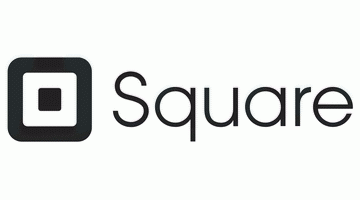Updated on March 9, 2022

What are the 4 steps of processing credit cards?
When a customer swipes a card and your merchant account starts the process of receiving funds only a few minutes later, it always seems like an easy process. However, the process of credit card processing is a lot more complicated and involves several parties;
- the customer (cardholder)
- the merchant (you or your business)
- the payment processor (if you use a merchant service company)
- acquiring bank (usually the backend processor or if you use the acquiring bank directly)
- the issuing bank (your customer’s bank)
- and the card network (your customer’s card).
Your customer plays the first and most important role. But then, let’s look at the numerous steps that make the four steps of credit card processing.
Step 1: Making Payments
As said earlier, the first step of any credit card transaction is payment. But then the mode of payment may happen in three main forms:
- Instore: This happens when the customer comes physically to your store and makes payment by either dipping (using EMV chip cards), tapping (contactless card or app), swiping (magnetic stripe) their card.
- e- wallet: Customers can also pay by using a digital wallet linked to their credit card. Great examples are Apple Pay, Samsung Pay, Google Pay, etc.
- Online: The customer enters their credit card details into a payment form on your website or mobile app.
- Phone transaction: In this case, the customer calls in and you will use a virtual terminal to provide secure credit card processing.
Step 2: Transition To The Credit Card Networks
Once the customer has entered their details using any of the mediums mentioned above, you will collect the customer’s details including credit card number, security code, expiration date, and payment account using your virtual payment gateway, merchant system, mobile terminal device, or through a point of sale system. From any of these systems, the information is sent to the acquiring bank ( or merchant bank) via the internet or phone line. From the acquiring bank, the information would be forwarded to the appropriate credit card network (such as Mastercard, Discover, or Visa). And then, the credit card network passes the information to the customer’s issuing bank for authentication.
Step 3: Payment Authentication
Once the customer’s issuing bank receives the payment request, they will verify that the customer has the available balance to make the purchase. To achieve this, the issuing bank will conduct security checks to authenticate the customer’s card details, check if the customer has enough credit to cover the purchase, and determine if there are any signs of fraudulent activity.
Once everything checks out as genuine, the issuing bank will approve the transaction and communicate it back to the merchant bank via the credit card terminal or reader. Otherwise, if the customer is not in good standing or the credentials don’t check out, then you might receive a message like ‘denied’ on your machine. At the same time, the customer sees the information about the transaction and finishes it while a response code will be stored on your merchant’s machine for the next stage of processing.
Step 4: Settlement
The clearing or settlement stage involves the merchant, acquiring bank, card network, and issuing bank. This process would mean a back and forth, credit and debit as money moves from one party to the next.
But it all starts with the storage of the credit card authorization on your merchant’s point-of-sale system. At the end of each business day, the merchant sends a batch of authorization (including transaction details of the customer and merchant services in the form of statements) to the acquiring bank or processor.
The acquiring bank will then confirm the transaction and send the batch through the card network to the appropriate issuing bank. The acquiring bank will also deposit the funds owed to you into your merchant account (minus processing fees).
The issuing bank will pay the acquiring bank through the card network. The card network will debit the issuing bank for each transaction amount and credit the acquiring bank, hence working as a middle person at this stage.
Concluding Thoughts
The process of credit card processing is complex but would always start with your customer making payments. However, the number of parties involved may vary slightly depending on your credit card payment solution of choice.
For instance, you can choose to set up your merchant account with an acquiring bank directly or use merchant service companies like Square. The latter would typically have an acquiring bank handle their back-end processing while they provide gorgeous features to facilitate your front-end needs. Nevertheless, this also means that there’s one more middle person in the equation.

